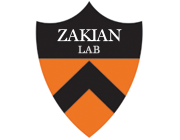Telomere-telomere recombination is an efficient bypass pathway for telomere maintenance in Saccharomyces cerevisiae.
Publication Year
1999
Type
Journal Article
Abstract
Many Saccharomyces telomeres bear one or more copies of the repetitive Y' element followed by approximately 350 bp of telomerase-generated C(1-3)A/TG(1-3) repeats. Although most cells lacking a gene required for the telomerase pathway die after 50 to 100 cell divisions, survivors arise spontaneously in such cultures. These survivors have one of two distinct patterns of telomeric DNA (V. Lundblad and E. H. Blackburn, Cell 73:347-360, 1993). The more common of the two patterns, seen in type I survivors, is tandem amplification of Y' followed by very short tracts of C(1-3)A/TG(1-3) DNA. By determining the structure of singly tagged telomeres, chromosomes in type II survivors were shown to end in very long and heterogeneous-length tracts of C(1-3)A/TG(1-3) DNA, with some telomeres having 12 kb or more of C(1-3)A/TG(1-3) repeats. Maintenance of these long telomeres required the continuous presence of Rad52p. Whereas type I survivors often converted to the type II structure of telomeric DNA, the type II pattern was maintained for at least 250 cell divisions. However, during outgrowth, the structure of type II telomeres was dynamic, displaying gradual shortening as well as other structural changes that could be explained by continuous gene conversion events with other telomeres. Although most type II survivors had a growth rate similar to that of telomerase-proficient cells, their telomeres slowly returned to wild-type lengths when telomerase was reintroduced. The very long and heterogeneous-length telomeres characteristic of type II survivors in Saccharomyces are reminiscent of the telomeres in immortal human cell lines and tumors that maintain telomeric DNA in the absence of telomerase.
Keywords
Journal
Mol Cell Biol
Volume
19
Issue
12
Pages
8083-93
Date Published
12/1999
ISSN Number
0270-7306
Alternate Journal
Mol. Cell. Biol.
PMID
10567534

